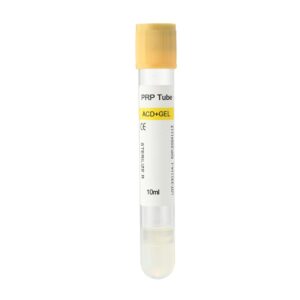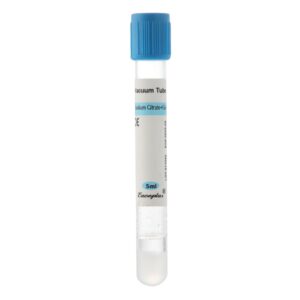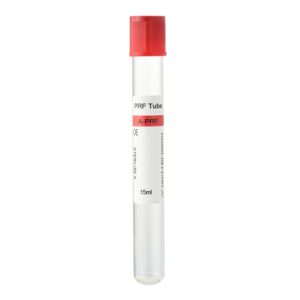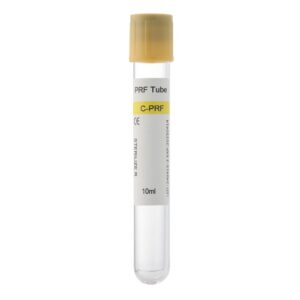When discussing PRP (Platelet-Rich Plasma) therapy, a common question is: Does PRP injection treatment hurt? Understanding the discomfort level during the procedure is crucial for those considering this treatment. This article will explain the pain associated with PRP injections from a professional perspective and provide tips on how to reduce this discomfort, helping readers gain a comprehensive understanding of all aspects of PRP therapy.
What is PRP?
PRP refers to platelet-rich plasma extracted from the patient’s blood. This plasma contains a high concentration of platelets and growth factors that can effectively promote the repair and regeneration of damaged tissues. Healthcare providers widely use PRP injections to treat sports injuries, arthritis, tendinopathy, ligament injuries, and for skin rejuvenation. PRP has been proven to significantly accelerate healing and reduce pain.
Obtaining PRP typically involves drawing a small amount of blood from the patient’s vein, concentrating the platelets through specialized centrifugation equipment, and injecting the platelet-rich plasma back into the damaged area. Since PRP is derived from the patient’s own body, it does not cause an immune rejection response, making it highly safe.
Does PRP Injection Hurt?
For most patients, PRP injections may cause some level of discomfort. Since healthcare providers inject PRP into the affected area with a needle, the level of pain and discomfort varies from person to person, primarily depending on the injection site and the patient’s tolerance.
- Effect of Injection Site: Typically, injections into joints, tendons, or soft tissues may cause more noticeable pain, especially severe inflammation. When injected into a joint, the confined space may lead to a certain degree of pressure and discomfort.
- Nature of Pain: Most patients describe the pain of PRP injections as similar to that of a regular muscle injection but slightly stronger. Some patients may experience sharp pain, pressure, or soreness. These sensations are usually brief and gradually subside after the injection.
How to Reduce Discomfort from PRP Injections
- Local Anesthesia: Before PRP injection, doctors usually administer local anaesthesia to the injection area to help alleviate the pain during the procedure. The effect of anaesthesia can significantly reduce the discomfort experienced during the injection, which is particularly important for patients sensitive to pain. Local anaesthesia ensures that patients experience minimal pain during the procedure.
- Precise Targeting: Physicians often perform PRP injections under ultrasound guidance to ensure that the needle reaches the target area accurately, thereby reducing the pain caused by multiple needle punctures. Furthermore, precise targeting can enhance the efficacy of PRP, allowing the growth factors to concentrate more effectively on the injured area, thereby maximizing tissue repair and regeneration.
- Relaxation Techniques: Psychological factors also play a role in pain perception. Maintaining a relaxed mindset during the injection can help reduce pain perception. Before treatment, patients can practice deep breathing exercises to alleviate tension. Additionally, effective communication between the doctor and patient during the procedure can alleviate anxiety, helping the patient remain calm.
Pain Management After PRP Treatment
In the hours to days following PRP treatment, the injection site may experience mild pain or swelling, a normal response as part of the body’s natural healing process. Below are some ways to manage discomfort:
- Ice Application: Within 24 to 48 hours post-treatment, ice packs can be applied to the injection site for 15-20 minutes each to reduce swelling and alleviate pain. Ice can effectively reduce localized inflammatory reactions, thereby reducing pain.
- Avoid Strenuous Activities: In the first few days after treatment, patients should avoid strenuous activities and excessive pressure on the treated area to prevent exacerbating inflammation and discomfort. It is recommended that patients follow their doctor’s guidance to gradually resume daily activities and avoid causing secondary damage to the treated area.
- Appropriate Pain Relief Medication: Under a doctor’s guidance, patients may take non-steroidal anti-inflammatory drugs (NSAIDs), such as ibuprofen, to alleviate pain after treatment. However, it is important to note that NSAIDs may interfere with PRP’s healing effects, so long-term or excessive use should be avoided. Patients should strictly follow their doctor’s advice regarding pain relief medications.
Additional Considerations for PRP Injections
- Preparation Before Treatment: Before undergoing PRP injections, patients should communicate in detail with their physician and inform them if they have taken anticoagulants or other medications that affect blood clotting, as these may impact PRP extraction and effectiveness. The doctor will provide specific recommendations based on the patient’s condition.
- Post-Treatment Rehabilitation Guidance: The rehabilitation process after PRP injections is crucial to the overall effectiveness of the treatment. Patients should strictly follow their doctor’s recommendations for rehabilitation exercises, avoid strenuous activities, and gradually incorporate physical therapy to help restore tissue function and regeneration.
Conclusion
Overall, the pain associated with PRP injections varies from person to person. Many patients report that the discomfort is tolerable, and given the long-term benefits of PRP, the short-term discomfort is worth it. Under the guidance of medical professionals, appropriate measures can effectively reduce pain during PRP treatment. If you have concerns about PRP therapy, it is advisable to discuss the procedure and potential reactions with your doctor beforehand to better prepare mentally.
PRP therapy, as a treatment that promotes the body’s natural healing process, is gaining recognition among an increasing number of patients. Although there may be some discomfort during the injection, proper medical interventions and care can make this pain manageable. We hope this article helps you better understand the pain concerns related to PRP treatment, alleviates your worries, and provides more comprehensive and scientific references.
By gaining an in-depth understanding of PRP therapy, patients can make better-informed decisions and work with their doctors to achieve optimal treatment outcomes. As a safe, effective, and continually evolving regenerative medical therapy, PRP injections will likely see broader applications, helping more patients achieve rapid recovery and pain relief.





